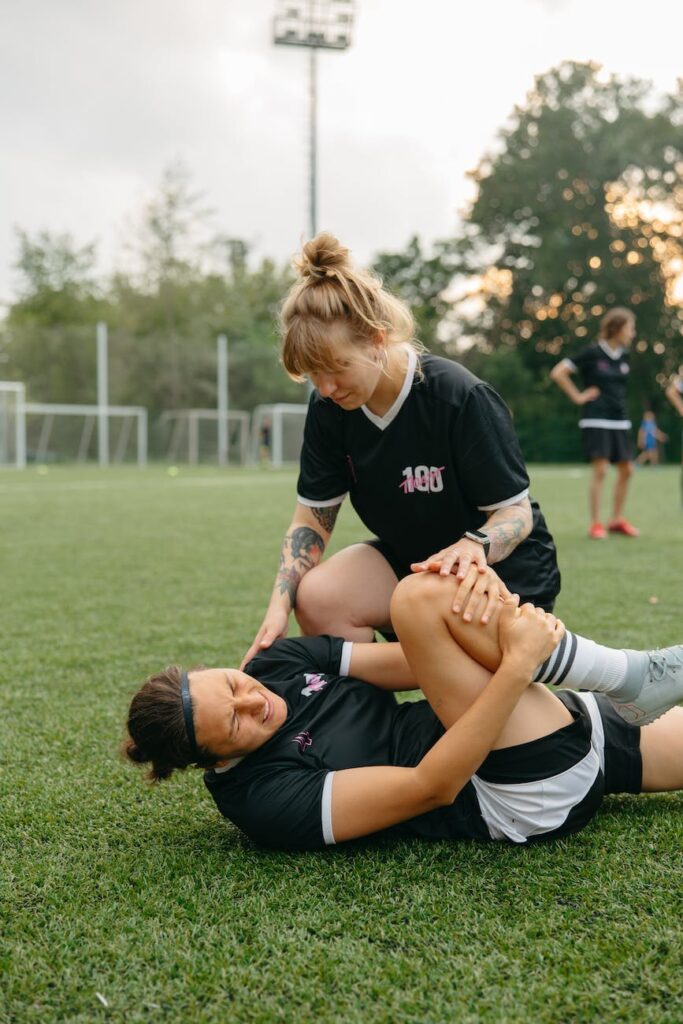Contents
Understanding Personal Injury Claims
Within the legal system, personal injury claims are crucial in helping individuals secure compensation for damages due to someone else’s negligence or harmful actions. This section will discuss the basics of personal injury claims and the various types that may arise.
Basics of Personal Injury Claims
Personal injury claims typically arise when an individual suffers harm from an accident or injury, and someone else might be legally responsible. The legal system allows the injured person to be ‘made whole’ after they’ve suffered harm due to someone else’s negligent or intentionally harmful behavior. This can be achieved through a legal process that may result in an award of damages, which is a monetary compensation for the injured person.
In Ohio, an individual has a two-year statute of limitations to file a personal injury claim, starting from the date of the incident. This is the timeframe for legal action, or the right to sue is lost (Slater & Zurz LLP). This same rule applies to most personal injury claims in the state. If a personal injury claim in Ohio is not filed within the two-year statute of limitations, the injured party may lose the right to seek compensation for their injuries.
It’s important to note that each personal injury claim is unique, and the specific circumstances surrounding the injury will largely determine the outcome of the claim. For more information on how these claims are processed, you can visit our page on personal injury claims.
Types of Personal Injury Claims
Several types of personal injury claims can be filed in Ohio, each with unique circumstances and legal considerations. Some of the most common types of claims include:
- Car Accident Claims arise when a driver or passenger is injured in a car accident due to another driver’s negligence.
- Slip and Fall Claims: These claims arise when an individual slips, trips, or falls on another person’s property due to unsafe conditions.
- Medical Malpractice Claims: These claims arise when a healthcare professional’s negligence causes injury or harm to a patient.
- Product Liability Claims: These claims arise when a defective or dangerous product injures an individual.
- Workplace Accident Claims: These claims arise when an employee is injured on the job due to unsafe work conditions or negligence by the employer.
For more detailed information on different types of personal injury claims, you can visit our page on types of personal injury cases. Understanding the specific type of personal injury claim you’re dealing with is crucial to navigating the legal process and securing the compensation you deserve.
Statute of Limitations for Claims
Understanding the legal timeline for filing personal injury claims is crucial to ensure the injured party can seek appropriate compensation. This timeframe, known as the statute of limitations, varies from state to state. In Ohio, this timeline has particular stipulations that claimants need to be aware of.
Time Limit for Filing Claims
In Ohio, the statute of limitations for most personal injury claims is two years from the date of the injury (source). This means that the injured party has two years from the date of the injury to file a claim. If a personal injury claim in Ohio is not filed within this two-year statute of limitations, the injured party may lose the right to seek compensation for their injuries (source). This timeline is in line with the stipulations of the Ohio Revised Code, which states that an action for bodily injury or injury to personal property in Ohio must typically be brought within two years after the cause of action occurs, generally when the injury or loss occurred.
Exceptions to the Statute of Limitations
While the two-year limit applies to most personal injury claims in Ohio, certain circumstances may alter this timeline and deadline. These exceptions can affect the statute of limitations for personal injury claims (source). For instance, intentional tort claims, such as assault and battery, have a one-year statute of limitations in Ohio, which is shorter than the typical two-year period for most personal injury claims.
Understanding these time limits is crucial for anyone seeking to file a personal injury claim in Ohio. It’s essential to consult with a knowledgeable attorney who can guide you through the process and ensure that all legal requirements and deadlines are met. For more information about navigating personal injury claims, check out our articles on personal injury claim examples, most common personal injury claims, and how to win a personal injury case.
Role of Negligence in Claims
Understanding the concept of negligence and how it impacts personal injury claims in Ohio is crucial for anyone embarking on the journey of seeking justice after an accident. This section will explain the principle of comparative negligence and elucidate how contributory fault impacts compensation.
Understanding Comparative Negligence
Ohio adheres to a modified comparative negligence rule in personal injury claims. According to this rule, an injured party can recover damages as long as their fault is not greater than the fault of the other party or parties involved (Slater & Zurz LLP). This system, also known as the “51 percent” rule, bars a person from recovery if they are 51% or more at fault for an accident.
However, if the plaintiff is found to be 50% or less at fault, they can still recover damages, but their percentage of fault reduces the total amount. This means that if the plaintiff is found to be 30% at fault, their compensation will be reduced by 30%.
One exception to this rule is in the case of dog bite incidents. Ohio follows a “strict liability” doctrine for dog bite cases, holding dog owners financially responsible for injuries their dogs cause, regardless of the dog’s previous behavior or the owner’s knowledge of that behavior.
Impact of Contributory Fault on Compensation
Contributory fault plays a significant role in determining the compensation an injured party can recover in a personal injury claim. Ohio operates under a modified comparative fault system, which means that an injured person’s damages will be reduced by the percentage of fault in causing the accident (Bensinger Legal).
For example, if an individual is awarded $100,000 in damages but is found to be 20% at fault for the accident, they will only receive $80,000 in compensation. This reduction reflects their contributory fault. However, if someone is found to be more than 50% at fault, they cannot recover damages. This strict application of comparative negligence underscores the importance of proving the other party’s fault in personal injury claims.
Understanding the role of negligence and its impact on compensation is key to navigating personal injury claims in Ohio. It’s recommended to consult with a legal professional to help understand these aspects better. For more information, please refer to our comprehensive guide on personal injury claims and how to win a personal injury case.
Damages in Personal Injury Claims
In the context of personal injury claims, damages refer to the monetary compensation awarded to victims for the losses they suffer due to an accident or injury. These damages are generally categorized into two types: economic damages and noneconomic damages.
Economic Damages
Economic damages in personal injury claims include compensation for monetary losses such as medical costs, lost wages, and out-of-pocket expenses. There is no cap on the amount that can be received in economic damages in Ohio, meaning that individuals can recover the full amount of damages incurred due to their injury (O’Connor, Acciani & Levy Co., LPA).
The actual compensation is determined by the ability to prove the losses, which requires documentation of the incurred costs. This can include medical bills, receipts for out-of-pocket expenses, and proof of lost wages or loss of earning capacity.
Documentation of losses is crucial to calculating compensatory damages in personal injury cases. This includes expenses incurred due to the accident and future costs arising from the injuries sustained. It is advisable to work with medical and financial experts and a personal injury lawyer to help determine the full value of compensatory damages to secure fair and full compensation.
Noneconomic Damages
Unlike economic damages, noneconomic damages are not tied to specific monetary losses. Instead, they compensate for intangible losses such as pain and suffering, emotional distress, and loss of enjoyment of life.
In Ohio, noneconomic damages are capped at one of two limits, depending on the type of case: $250,000 for most personal injury cases or $350,000 for cases involving catastrophic injuries. The state also places a cap on punitive damages, awarded to punish the defendant and deter similar behavior in the future, based on a defendant’s net worth (O’Connor, Acciani & Levy Co., LPA).
Understanding the types of damages and caps on compensation can be complex. It’s recommended to consult with a personal injury attorney to navigate these aspects and ensure that you receive fair compensation for your losses. Visit choosing the right personal injury lawyer for guidance on selecting an attorney.
Dealing with insurance aspects is a critical part of the process when filing personal injury claims in Ohio. These aspects include interaction with insurance adjusters and understanding the role of uninsured or underinsured coverage.
Dealing with Insurance Adjusters
When filing an insurance claim for a personal injury in Ohio, it is crucial to cooperate with the insurance adjuster assigned to the case. This often involves providing necessary documentation, such as medical records. However, it’s important to understand that there are limits to what the adjuster is entitled to, and working with an attorney can protect private information.
While the insurance company conducts its investigation, it is advisable to conduct an independent investigation simultaneously. Seeking assistance from an experienced personal injury attorney can help in obtaining evidence that the insurer may not have requested and may shed new light on the evidence already gathered.
After filing an insurance claim, it is common to receive a settlement offer. These initial settlement offers are typically low, and the decision to accept or seek more money should be made with the guidance of an experienced attorney based on the full extent and cost of injuries. For more information on settlement offers, you can read our article on how are personal injury settlements paid out.
The Role of Uninsured/Underinsured Coverage
Ohio law requires all insurance policies to include uninsured or underinsured motorist coverage. This coverage can be utilized if the other driver lacks sufficient insurance to cover the damages or if the other driver flees the scene, making it a critical aspect of personal injury claims in Ohio.
This coverage can also serve as a safety net when the negligent party has no insurance at all. In such cases, claimants can seek compensation from their own insurance company under the uninsured motorist coverage. However, as with any insurance claim, it’s crucial to have legal representation to navigate the complexities and protect your rights.
For further information on insurance in personal injury claims, you can refer to our article on insurance in personal injury claims.
Navigating insurance aspects in a personal injury claim can be complex, but with the right knowledge and legal guidance, claimants can effectively seek the compensation they deserve.
Legal Assistance in Personal Injury Claims
Professional legal assistance can prove invaluable in the complex landscape of personal injury claims. This section explores the benefits of hiring a personal injury attorney and their role in claim settlements, particularly in the context of personal injury claims in Ohio.
Benefits of Hiring a Personal Injury Attorney
Hiring a personal injury attorney can benefit those navigating personal injury claims. Particularly in Ohio, seeking assistance from an experienced personal injury attorney is advisable. They can provide guidance and ensure compliance with the statute of limitations and deadlines for filing a claim (source).
An attorney’s in-depth knowledge and experience in handling personal injury claims can be instrumental in navigating the complex legal processes associated with these cases. Furthermore, an attorney is dedicated to protecting their clients’ rights and interests, ensuring they receive the compensation they deserve.
For those uncertain about engaging an attorney, our guide on choosing the right personal injury lawyer can provide further insights.
The Role of an Attorney in Claim Settlements
When filing an insurance claim for a personal injury in Ohio, receiving a settlement offer is common. An experienced attorney can help evaluate the offer and negotiate for a fair compensation amount based on the full extent and cost of injuries (source).
In personal injury cases in Ohio, it’s advisable to conduct an independent investigation simultaneously with the insurance company’s efforts. An attorney can assist in obtaining evidence that the insurer may not have requested and potentially shed new light on evidence already gathered.
In situations where settling is not likely, parties involved in personal injury cases in Ohio may resort to alternative dispute resolution methods such as mediation or arbitration. An attorney can provide guidance and representation throughout the process, helping parties reach an agreement outside of court (source).
In all these aspects, an attorney plays a pivotal role in pursuing justice for those involved in personal injury cases. For more on this topic, explore our article on how to win a personal injury case and learn about the process of settling vs. going to trial.







